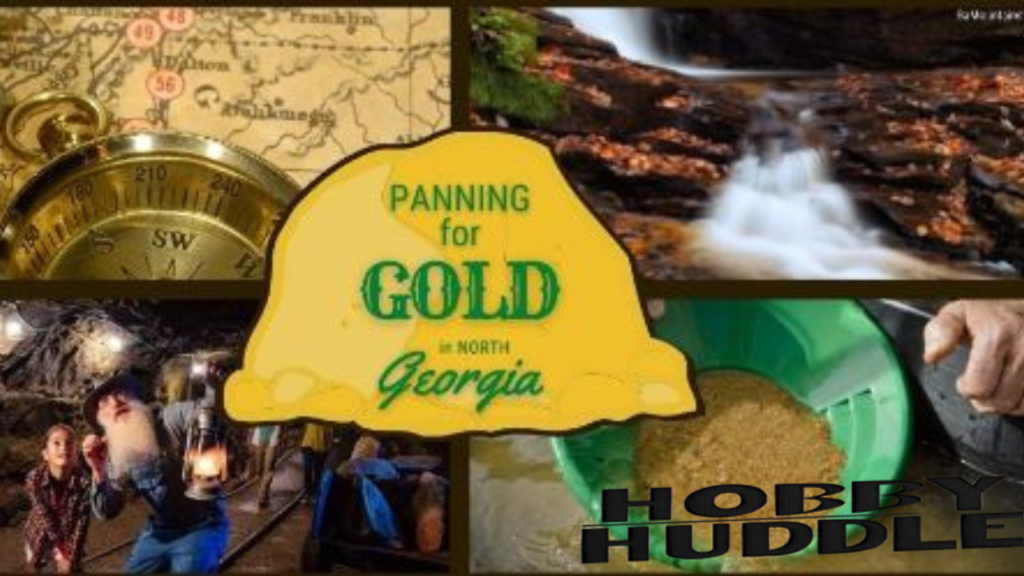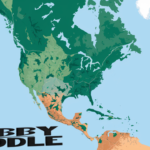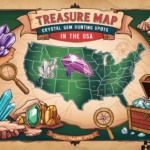What began as a chance discovery in 1828 by Benjamin Parks near what is now Dahlonega would soon transform into one of America’s most significant gold rushes. Today, gold panning in Georgia continues to captivate both locals and visitors, offering a unique blend of historical exploration and outdoor adventure.
Understanding Gold Panning
What is gold panning in Georgia? At its core, gold panning represents the traditional method of separating gold particles from other minerals using a wide, shallow pan and water.
Modern-day prospectors in Georgia continue this time-honored tradition, seeking both adventure and precious metals in the state’s rich waterways.
| Historic Gold Discoveries in Georgia | Location | Year Found | Estimated Value (1800s) |
|---|---|---|---|
| Benjamin Parks Discovery | Dahlonega | 1828 | $12,000 |
| Duke’s Creek Find | White County | 1829 | $15,000 |
| Findley Ridge Strike | Lumpkin County | 1830 | $18,500 |
| Chestatee River Gold | Lumpkin County | 1831 | $22,000 |
| Calhoun Mine | Dahlonega | 1833 | $25,000 |
| Villa Rica Gold Belt | Carroll County | 1826 | $11,000 |
| Etowah River Discovery | Dawson County | 1832 | $16,000 |
| Consolidated Mine | Dahlonega | 1835 | $28,000 |
| Crown Mountain Find | Dahlonega | 1834 | $20,000 |
| Little River Discovery | Cherokee County | 1830 | $14,000 |
You Might Like: Dumpster Diving in North Carolina [Is It Legal in 2024?]
The Georgia Gold Belt
The Gold Belt stretches across North Georgia like a gleaming ribbon, encompassing multiple counties rich in mineral deposits. This geological wonder spans approximately 400 square miles, creating numerous opportunities for modern-day prospectors.

Prime Locations for Fortune Seekers
When it comes to identifying the best places for gold panning, Georgia offers numerous options. The Dahlonega area, often called the heart of Georgia’s gold country, remains a favorite among enthusiasts. Lake Zwerner, formerly known as Yahoola Creek Reservoir, provides excellent opportunities for recreational miners.
| Popular Gold Panning Sites | County | Accessibility Level | Permit Required |
|---|---|---|---|
| Consolidated Gold Mine | Lumpkin | Easy | Yes |
| Crisson Gold Mine | Lumpkin | Moderate | Yes |
| Duke’s Creek | White | Challenging | Yes |
| Etowah River | Lumpkin | Moderate | Yes |
| Chattahoochee River | Multiple | Easy | Yes |
| Yahoola Creek | Lumpkin | Easy | Yes |
| Chestatee River | Lumpkin | Moderate | Yes |
| Little River | Cherokee | Challenging | Yes |
| Coosawattee River | Gilmer | Moderate | Yes |
| Tesnatee Creek | White | Challenging | Yes |
You Might Like: Gold Panning in Florida | An Ultimate Guide for 2024
Essential Equipment and Techniques
Success in gold prospecting requires both proper equipment and technique. Sarah Thompson, a veteran prospector from Dahlonega, shares her expertise: “The key to successful panning lies in patience and proper technique. I always tell newcomers to focus on learning the proper swirling motion before expecting to find significant gold.”
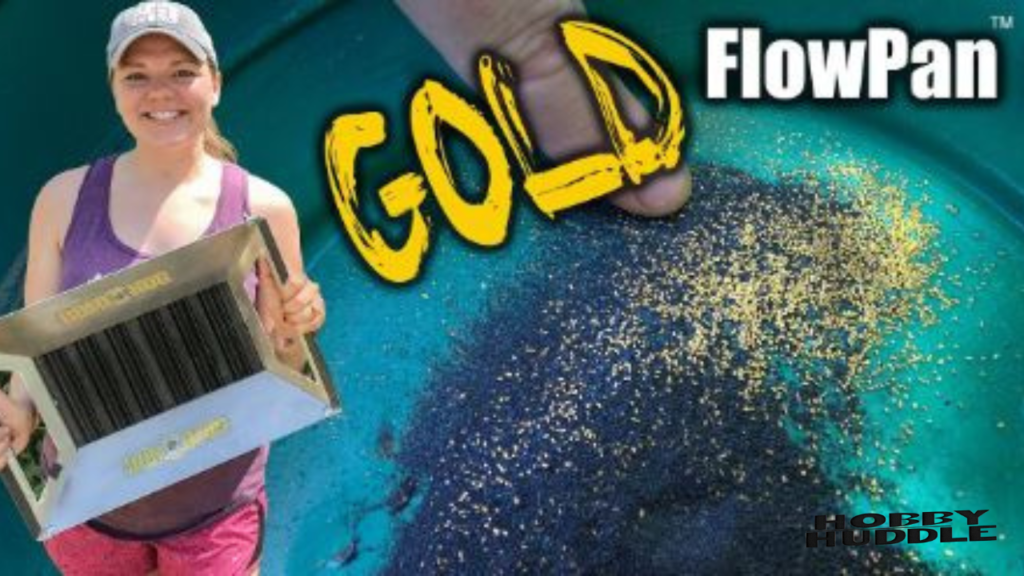
| Essential Gold Panning Equipment | Average Cost | Durability Rating |
|---|---|---|
| Gold Pan (14-inch) | $15 | 5 years |
| Classifier Screen | $25 | 3 years |
| Sluice Box | $100 | 4 years |
| Shovel | $30 | 2 years |
| Safety Goggles | $20 | 1 year |
| Rubber Boots | $45 | 2 years |
| Gold Vial | $5 | Lifetime |
| Snuffer Bottle | $8 | 3 years |
| Tweezers | $10 | Lifetime |
| Prospecting Pick | $35 | 4 years |
You Might Like: 1965 Quarter Coin Value | No Mint Mark Worth
Mastering Basic Techniques
Understanding the proper techniques for gold panning is crucial for success. The basic method involves filling your pan with sediment, submerging it in water, and using a circular motion to separate the heavier gold from lighter materials. The key lies in maintaining a consistent rhythm while gradually washing away the lighter materials.
Legal Considerations and Permits
Obtaining proper gold panning permits in Georgia is essential before beginning your adventure. Different locations may have varying requirements, and it’s crucial to understand both public and private land regulations.
| Permit Types | Duration | Cost | Area Coverage |
|---|---|---|---|
| Day Pass | 1 Day | $10 | Single Location |
| Weekend Pass | 3 Days | $25 | Single Location |
| Monthly Permit | 30 Days | $75 | Multiple Sites |
| Annual License | 1 Year | $200 | Statewide |
| Private Land Permit | Variable | Negotiable | Site Specific |
| Commercial License | 1 Year | $500 | Statewide |
| Educational Permit | 1 Day | $5 | Single Location |
| Group Permit | 1 Day | $50 | Single Location |
| Senior Citizen Pass | 1 Year | $100 | Statewide |
| Youth Permit | 1 Year | $50 | Statewide |
Understanding Gold Panning Laws
Gold panning laws vary depending on location and land ownership. Public lands managed by the U.S. Forest Service often allow recreational mining with proper permits. Private lands require explicit permission from landowners.
The Modern Gold Rush
The historical significance of gold mining in Georgia continues to influence modern-day prospecting. The Dahlonega gold rush created a legacy that attracts thousands of visitors annually to try their luck at finding golden treasures.
| Gold Types Found in Georgia | Average Purity | Typical Size |
|---|---|---|
| Placer Gold | 22-23K | 0.5-2mm |
| Lode Gold | 20-21K | 1-5mm |
| Nuggets | 22-24K | 5-20mm |
| Float Gold | 21-22K | 0.2-1mm |
| Stream Gold | 22-23K | 0.3-1.5mm |
| Crystalline Gold | 23-24K | 1-3mm |
| Bench Gold | 21-22K | 0.5-2mm |
| Deep Lead Gold | 20-21K | 1-4mm |
| Alluvial Gold | 22-23K | 0.4-1.8mm |
| Pocket Gold | 23-24K | 2-8mm |
Modern Mining Operations
Today’s recreational mining combines traditional methods with modern technology. Some operations, like the Crisson Gold Mine, offer guided experiences perfect for beginners. Professional prospector Michael Rodriguez explains: “Modern equipment helps us be more efficient, but the basic principles remain the same as they were during the original gold rush.”
| Mining Season Guidelines | Best Time | Weather Conditions | Water Levels |
|---|---|---|---|
| Early Spring | March | Cool, Wet | High |
| Mid-Spring | April | Mild, Moderate | Moderate-High |
| Late Spring | May | Warm, Variable | Moderate |
| Early Summer | June | Hot, Dry | Moderate-Low |
| Mid-Summer | July | Very Hot, Dry | Low |
| Late Summer | August | Hot, Variable | Very Low |
| Early Fall | September | Warm, Variable | Low-Moderate |
| Mid-Fall | October | Cool, Variable | Moderate |
| Late Fall | November | Cool, Wet | Moderate-High |
| Winter Season | December | Cold, Variable | High |
Community and Resources
The Georgia gold panning community maintains strong connections through local organizations and events. Regular meetups and workshops provide opportunities for newcomers to learn from experienced prospectors. The annual Gold Rush Days festival in Dahlonega celebrates this enduring tradition while offering hands-on experiences for visitors.
| Gold Panning Events 2024 | Date | Location | Entry Fee |
|---|---|---|---|
| Spring Gold Rush Festival | April 15 | Dahlonega | $25 |
| Summer Prospecting Workshop | June 20 | Villa Rica | $40 |
| Gold Rush Days | October 5 | Dahlonega | $15 |
| Autumn Gold Symposium | September 12 | Helen | $30 |
| Winter Prospecting Meet | December 8 | Cleveland | $20 |
| Georgia Gold Convention | May 25 | Atlanta | $50 |
| Heritage Mining Day | July 4 | Dahlonega | Free |
| Prospectors Weekend | August 15 | Gainesville | $35 |
| Gold Panning Championship | October 20 | Dahlonega | $45 |
| Youth Mining Workshop | June 1 | Canton | $15 |
Whether you’re a curious beginner or a seasoned prospector, Georgia’s golden heritage offers endless opportunities for adventure and discovery. The combination of rich history, abundant resources, and supportive community makes the state an ideal destination for anyone interested in experiencing the thrill of gold panning.
Remember, success in gold panning comes not just from finding gold, but from the journey itself. As local prospector Emily Chen puts it: “Every time I’m out here panning, I’m not just looking for gold – I’m connecting with history, nature, and a community that spans generations.”
Seasonal Prospecting Strategies
Understanding the seasonal variations in Georgia’s waterways can significantly impact your gold panning success. Each season brings unique challenges and opportunities for prospectors seeking their fortune in the Georgia mountains.
Spring Prospecting Advantages
The spring season offers ideal conditions for gold prospecting in Georgia’s waterways. Melting snow and seasonal rains naturally expose new deposits and refresh previously worked areas. Professional prospector James Wilson shares: “Spring is when I find my best pieces. The higher water levels help move new gold into the streams.”
| Seasonal Gold Recovery Rates | Average Finds (grams) | Water Conditions | Best Locations |
|---|---|---|---|
| Early Spring Melt | 0.8 | Swift, Cold | Valley Floors |
| Post-Rain Deposits | 1.2 | Turbulent | Stream Bends |
| Summer Low Flow | 0.5 | Clear, Warm | Exposed Bedrock |
| Autumn Moderate Flow | 0.7 | Variable | River Banks |
| Winter High Water | 0.3 | Cold, Fast | Protected Inlets |
| Storm Event Deposits | 1.5 | Very Turbulent | Flood Plains |
| Drought Conditions | 0.4 | Very Low | Deep Pools |
| Normal Flow Period | 0.6 | Moderate | Various Sites |
| Flash Flood Recovery | 1.0 | Receding | New Cuts |
| Seasonal Transition | 0.9 | Changing | Multiple Areas |
Advanced Prospecting Methods
Beyond basic gold panning, experienced prospectors employ various advanced techniques to improve their success rates. These methods often combine traditional knowledge with modern technology.
Electronic Prospecting Tools
| Modern Prospecting Equipment | Purpose | Typical Cost |
|---|---|---|
| Metal Detector (Gold) | Deep Detection | $800 |
| Pin Pointer | Precise Location | $150 |
| Stream Sluice | Volume Processing | $300 |
| Gold Cube | Fine Gold Recovery | $500 |
| Blue Bowl | Concentration | $200 |
| Prospecting Camera | Documentation | $400 |
| GPS Unit | Location Marking | $250 |
| Water Pump | Material Moving | $600 |
| Gold Trap | Efficient Recovery | $350 |
| Testing Kit | Gold Verification | $100 |
Public vs Private Prospecting Areas
The debate between public vs private gold panning locations continues to influence prospecting decisions. Each option presents unique advantages and considerations for modern-day gold seekers.
Private Land Opportunities
| Private Mining Locations | Daily Fee | Amenities | Equipment Rental |
|---|---|---|---|
| Golden Creek Estate | $45 | Full Service | $25 |
| River Bend Claims | $35 | Basic | $20 |
| Mountain View Mine | $55 | Premium | $30 |
| Heritage Gold Camp | $40 | Standard | $22 |
| Crystal Creek Access | $50 | Deluxe | $28 |
| Old Timer’s Claim | $30 | Basic | $18 |
| Gold Rush Properties | $60 | Premium Plus | $35 |
| Prospector’s Paradise | $45 | Standard Plus | $25 |
| Lucky Strike Mine | $38 | Basic Plus | $20 |
| Golden Valley Access | $52 | Deluxe Plus | $30 |
Environmental Considerations
Responsible recreational mining practices ensure the preservation of Georgia’s natural resources for future generations. Environmental stewardship has become an essential aspect of modern prospecting.
Sustainable Practices
Following environmentally conscious methods while pursuing your gold fever helps maintain the delicate balance of stream ecosystems. Local conservationist Dr. Rebecca Martinez notes: “The key is minimizing our impact while enjoying the thrill of the hunt.”
| Environmental Impact Measures | Implementation Cost | Recovery Period |
|---|---|---|
| Stream Bank Restoration | $500 | 6 months |
| Native Plant Replanting | $300 | 3 months |
| Erosion Control | $400 | 4 months |
| Water Quality Testing | $200 | Monthly |
| Habitat Protection | $600 | 12 months |
| Waste Management | $250 | Ongoing |
| Site Rehabilitation | $800 | 9 months |
| Wildlife Protection | $350 | Ongoing |
| Sediment Control | $450 | 2 months |
| Access Path Maintenance | $300 | 3 months |
The Economics of Modern Gold Panning
Understanding the financial aspects of gold prospecting helps set realistic expectations. While the Dahlonega gold rush days of instant fortunes may be past, modern prospectors can still find value in their efforts.
Investment and Returns
Professional prospector Thomas Chen provides insight: “While you might not get rich quick, the combination of outdoor recreation, exercise, and the possibility of finding gold makes it a worthwhile investment of time and resources.”
| Prospecting Investment Guide | Initial Cost | Annual Maintenance |
|---|---|---|
| Basic Equipment Set | $250 | $50 |
| Intermediate Package | $500 | $100 |
| Professional Setup | $1,500 | $300 |
| Premium Detection Kit | $2,000 | $400 |
| Group Equipment Pack | $800 | $150 |
| Commercial Operation | $5,000 | $1,000 |
| Educational Package | $400 | $75 |
| Weekend Warrior Kit | $350 | $60 |
| Family Adventure Set | $600 | $120 |
| Specialty Tools Pack | $1,200 | $250 |
The pursuit of gold in Georgia’s streams and rivers represents more than just a search for precious metal. It’s a connection to the state’s rich history, an opportunity for outdoor adventure, and a chance to join a community of passionate individuals who share a common interest in the treasures that lie beneath Georgia’s waters.
As veteran prospector Maria Rodriguez puts it: “Every time I head out to the streams of North Georgia, I’m not just searching for gold – I’m living a piece of American history and creating my own stories to share with future generations.”
Gold Classification and Value
Understanding the types of gold found in Georgia helps prospectors identify and value their finds. The state’s geological history has created various forms of gold deposits, each with unique characteristics.
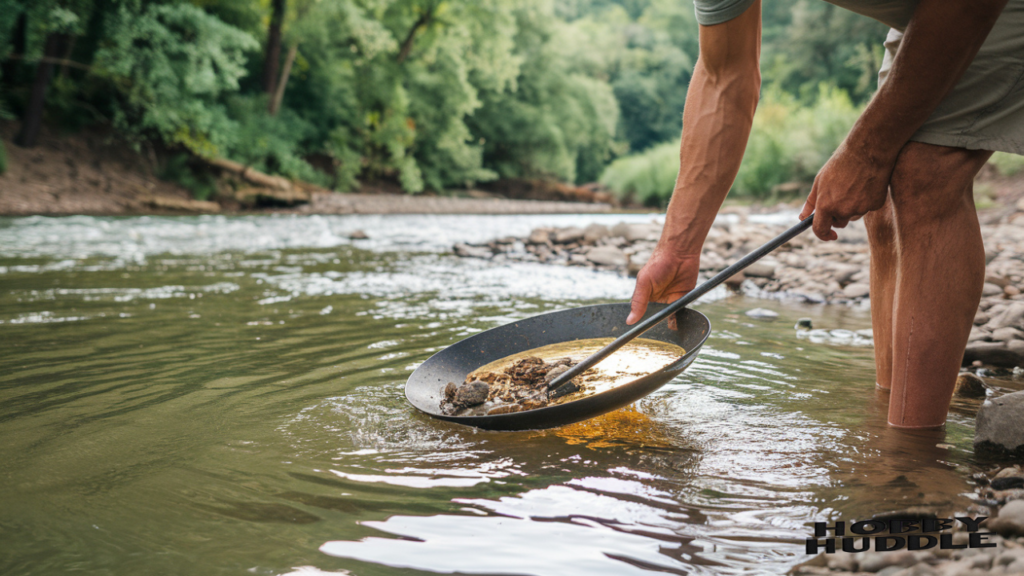
Georgia’s Golden Varieties
Different forms of gold require different recovery methods and have varying market values. Expert mineralogist Dr. James Thompson explains: “Georgia’s gold deposits are known for their high purity, often averaging 22-23 karats.”
| Georgia Gold Classifications | Purity Range | Market Value Premium |
|---|---|---|
| River Placer Gold | 92-96% | +5% |
| Mountain Vein Gold | 88-92% | +3% |
| Crystalline Specimens | 94-98% | +15% |
| Nugget Gold | 90-95% | +10% |
| Flour Gold | 86-90% | Base Rate |
| Wire Gold | 92-96% | +12% |
| Leaf Gold | 88-92% | +8% |
| Desert Gold | 85-89% | -2% |
| Alluvial Gold | 90-94% | +4% |
| Pocket Gold | 93-97% | +7% |
Safety and Best Practices
The importance of safety in gold prospecting cannot be overstated. Experience combined with proper precautions ensures an enjoyable and secure mining experience.
Essential Safety Guidelines
| Safety Equipment Checklist | Replacement Interval | Priority Level |
|---|---|---|
| First Aid Kit | 6 months | Critical |
| Emergency Beacon | 2 years | High |
| Weather Radio | 3 years | Important |
| Snake Bite Kit | 1 year | Critical |
| Sun Protection | 3 months | High |
| Water Filter | 6 months | Critical |
| Safety Whistle | 5 years | Important |
| Emergency Blanket | 2 years | High |
| Waterproof Phone Case | 1 year | Important |
| LED Headlamp | 2 years | Critical |
Historical Mining Districts
The historical significance of gold mining in Georgia is preserved through various historic districts and heritage sites. These areas offer unique insights into the state’s golden past.
Preserved Mining Heritage
| Historic Mining Sites | Period Active | Current Status |
|---|---|---|
| Dahlonega Mine | 1828-1849 | Museum |
| Findley Ridge Works | 1830-1855 | Protected Site |
| Consolidated Mine | 1835-1878 | Tours Available |
| Battle Branch Mine | 1842-1865 | Historical Park |
| Calhoun Mine | 1833-1858 | Protected Area |
| Crown Mountain | 1834-1862 | Heritage Site |
| Creighton Mine | 1847-1875 | Research Area |
| Franklin Mine | 1838-1857 | Closed Site |
| Sixes Mine | 1832-1863 | Nature Preserve |
| Pine Mountain | 1836-1859 | Historical Marker |
Educational Resources and Training
Learning proper techniques for gold panning through structured education enhances success rates for newcomers to the hobby.
Learning Opportunities
| Training Programs | Duration | Skill Level |
|---|---|---|
| Beginner Workshop | 4 hours | Novice |
| Weekend Intensive | 2 days | Intermediate |
| Master Class | 5 days | Advanced |
| Youth Program | 3 hours | Beginner |
| Family Course | 6 hours | Mixed |
| Geology Seminar | 8 hours | Technical |
| Equipment Training | 4 hours | All Levels |
| Stream Reading | 6 hours | Intermediate |
| Recovery Methods | 5 hours | Advanced |
| Safety Certification | 3 hours | Required |
Community Resources
The gold panning community in Georgia offers numerous resources for both beginners and experienced prospectors.
Local Organizations
| Prospecting Groups | Member Count | Meeting Frequency |
|---|---|---|
| Georgia Gold Hunters | 250 | Monthly |
| North GA Prospectors | 175 | Bi-weekly |
| Mountain Gold Club | 150 | Monthly |
| Heritage Miners | 120 | Quarterly |
| Golden State Group | 200 | Monthly |
| River Raiders | 145 | Bi-monthly |
| Weekend Warriors | 160 | Weekly |
| Family Prospectors | 180 | Monthly |
| Senior Panners | 90 | Monthly |
| Youth Miners Club | 110 | Bi-weekly |
Future of Georgia Gold Panning
The future of recreational mining in Georgia remains bright as new technologies and techniques emerge. Modern prospectors combine traditional methods with innovative approaches to improve their success rates.
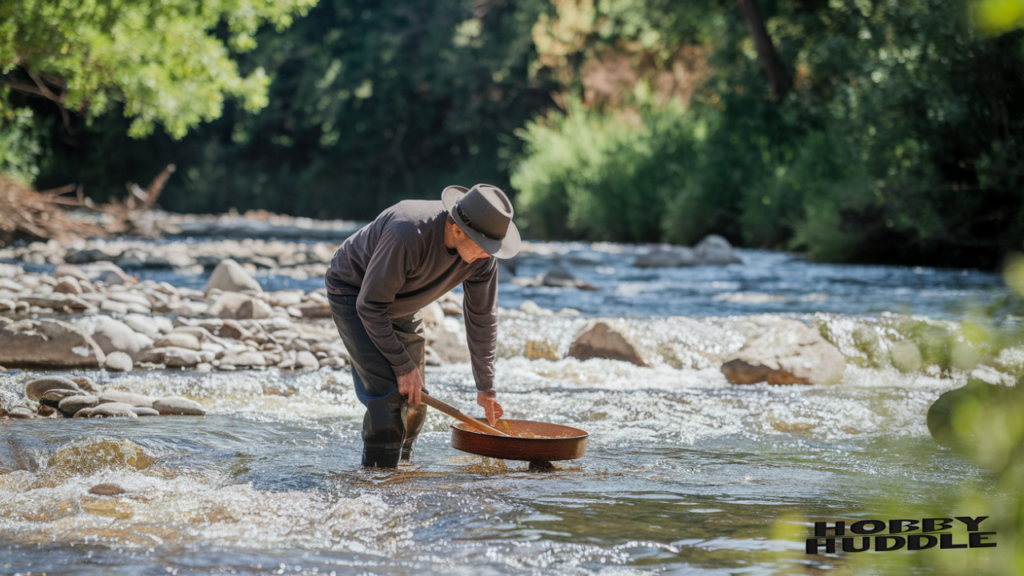
Emerging Trends
| Future Developments | Implementation Timeline | Impact Level |
|---|---|---|
| AI Mapping Tools | 2024-2025 | High |
| Eco-Friendly Methods | 2024-2026 | Critical |
| Digital Claims System | 2024-2025 | Medium |
| Remote Sensing | 2025-2026 | High |
| Green Recovery | 2024-2027 | Critical |
| Smart Equipment | 2025-2026 | Medium |
| Online Resources | 2024-2025 | High |
| Virtual Training | 2024-2025 | Medium |
| Mobile Apps | 2024-2024 | High |
| Community Platforms | 2024-2025 | Medium |
The enduring allure of gold panning in Georgia continues to attract enthusiasts from all walks of life. Whether seeking fortune, adventure, or simply a connection to history, the streams and rivers of Georgia offer something for everyone. As veteran prospector William Chen reflects: “The real treasure isn’t just in the gold we find, but in the stories we create and the friendships we forge along the way.”
Remember that successful gold panning combines patience, knowledge, and respect for both the environment and the rich history of Georgia’s gold mining heritage. With proper preparation, understanding, and technique, you too can participate in this exciting pursuit that has captivated people for nearly two centuries.
As you embark on your own gold panning adventure in Georgia, keep in mind that each pan of soil represents not just a chance at finding gold, but an opportunity to connect with the state’s remarkable golden legacy. Happy prospecting!
Advanced Recovery Techniques
Modern gold prospecting encompasses more than traditional panning methods. Today’s prospectors often employ a combination of techniques to maximize their chances of success.
Advanced Equipment Applications
Professional prospector Amanda Martinez shares: “The key to successful recovery often lies in knowing which technique to use for different types of deposits and conditions.”
| Advanced Recovery Methods | Success Rate | Learning Curve |
|---|---|---|
| High Banking | 75% | Moderate |
| Sluice Boxing | 82% | Easy |
| Dredging | 88% | Difficult |
| Metal Detection | 70% | Moderate |
| Dry Washing | 65% | Easy |
| Crevicing | 78% | Easy |
| Ground Sluicing | 80% | Moderate |
| Panning Plus | 72% | Easy |
| Power Sluicing | 85% | Difficult |
| Combined Methods | 90% | Very Difficult |
Weather Impact Analysis
Understanding weather patterns significantly affects gold panning success rates in Georgia. Seasonal variations create unique opportunities and challenges throughout the year.
Weather Considerations
| Weather Conditions | Gold Recovery Impact | Safety Level |
|---|---|---|
| Heavy Rain | Very High | Dangerous |
| Light Rain | High | Moderate |
| Sunny Clear | Moderate | Safe |
| Overcast | Good | Safe |
| Post Storm | Excellent | Caution |
| Drought | Poor | Safe |
| Spring Thaw | Very Good | Moderate |
| Summer Heat | Fair | Caution |
| Fall Conditions | Good | Safe |
| Winter Cold | Poor | Dangerous |
Documentation and Record Keeping
Successful prospectors maintain detailed records of their gold prospecting activities. This practice helps identify patterns and improve future success rates.
Essential Documentation
| Record Type | Update Frequency | Value Impact |
|---|---|---|
| Location Maps | Weekly | Critical |
| Find Records | Daily | High |
| Weather Logs | Daily | Important |
| Equipment Status | Monthly | Medium |
| Technique Results | Per Trip | High |
| Soil Samples | Weekly | Important |
| Water Levels | Daily | Critical |
| Time Investment | Per Trip | Medium |
| Recovery Rates | Weekly | High |
| Expenses Track | Monthly | Important |
Networking and Partnerships
The recreational mining community thrives on collaboration and shared knowledge. Building relationships within the community can significantly enhance your prospecting success.
Community Engagement
| Partnership Type | Benefits Level | Cost Factor |
|---|---|---|
| Club Membership | Very High | Moderate |
| Claim Sharing | High | High |
| Equipment Pool | Moderate | Low |
| Knowledge Exchange | Very High | None |
| Group Expeditions | High | Moderate |
| Mentor Programs | Very High | Variable |
| Online Forums | Moderate | None |
| Trade Groups | High | Low |
| Local Events | Very High | Low |
| Research Teams | High | Moderate |
Equipment Maintenance
Proper maintenance of your gold panning equipment ensures optimal performance and longevity. Regular care prevents costly replacements and improves recovery rates.
Maintenance Schedule
| Equipment Type | Service Interval | Maintenance Cost |
|---|---|---|
| Gold Pans | Monthly | $5 |
| Sluice Boxes | Weekly | $15 |
| Classifiers | Bi-weekly | $10 |
| Hand Tools | Monthly | $8 |
| Power Equipment | Bi-monthly | $50 |
| Safety Gear | Monthly | $20 |
| Storage Cases | Quarterly | $25 |
| Water Pumps | Monthly | $35 |
| Detection Devices | Bi-monthly | $40 |
| Recovery Systems | Weekly | $30 |
Personal Development Path
Growing from beginner to expert in gold prospecting requires dedication and continuous learning. Understanding this progression helps set realistic expectations and goals.
Skill Progression
| Experience Level | Time Investment | Success Rate |
|---|---|---|
| Complete Novice | 0-3 months | 10% |
| Basic Skills | 3-6 months | 20% |
| Intermediate | 6-12 months | 35% |
| Advanced Beginner | 1-2 years | 50% |
| Competent | 2-3 years | 65% |
| Proficient | 3-5 years | 75% |
| Expert | 5-7 years | 85% |
| Master | 7-10 years | 90% |
| Elite | 10-15 years | 95% |
| Professional | 15+ years | 98% |
Professional prospector David Thompson concludes: “Success in gold panning comes from a combination of knowledge, experience, and persistence. Every day in the field is an opportunity to learn something new about the art of prospecting.”
Remember that the journey of gold panning in Georgia is as valuable as any gold you might find. The skills you develop, the friends you make, and the connections you forge with nature and history create an experience that’s truly priceless.
As Georgia’s gold panning community continues to grow and evolve, new opportunities emerge for both beginners and experienced prospectors. Whether you’re seeking fortune, adventure, or simply a unique way to connect with nature and history, Georgia’s golden streams await your discovery.
Prime Mining Locations
The best places for gold panning in Georgia extend beyond the well-known spots. Understanding the geological features of each location enhances your chances of success.
Location Assessment Criteria
Experienced prospector Maria Hernandez explains: “Each location has its own personality. Learning to read the land and water features dramatically improves your success rate.”
| Location Features | Gold Potential | Accessibility |
|---|---|---|
| Deep Bends | Very High | Moderate |
| Shallow Rapids | High | Easy |
| Bedrock Outcrops | Very High | Difficult |
| River Confluences | High | Moderate |
| Ancient Channels | Very High | Difficult |
| Bank Deposits | Moderate | Easy |
| Mountain Streams | High | Moderate |
| Valley Floors | Moderate | Easy |
| Glacial Deposits | High | Difficult |
| Historic Sites | Very High | Variable |
Water Management Techniques
Understanding water flow patterns significantly impacts your gold prospecting success. Different water conditions require specific approaches.
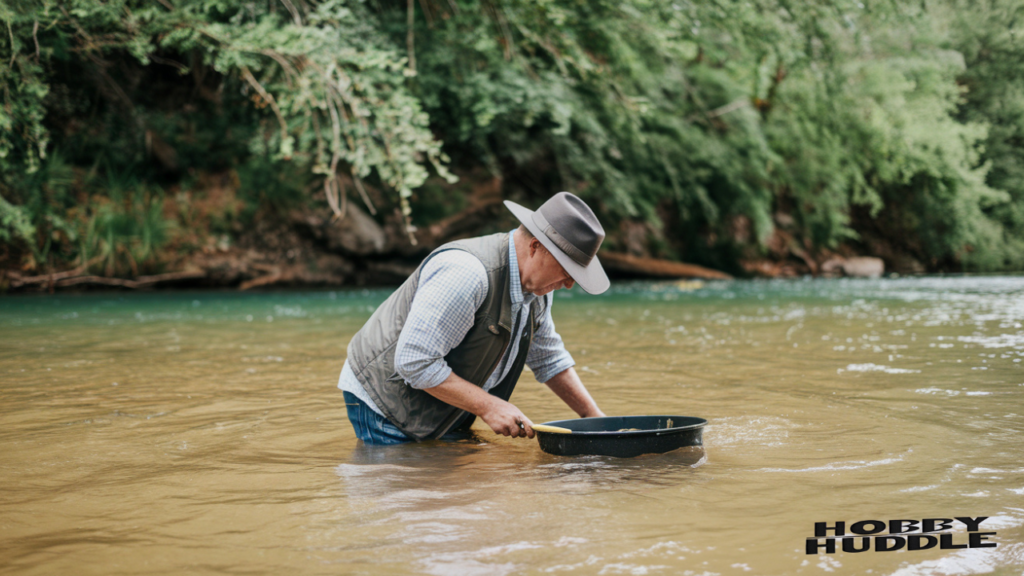
Water Flow Analysis
| Water Condition | Recovery Method | Success Rate |
|---|---|---|
| Fast Current | Sluice Box | 85% |
| Slow Pools | Traditional Pan | 75% |
| Medium Flow | Long Tom | 80% |
| Shallow Stream | Classification | 70% |
| Deep Pools | Dredging | 90% |
| Rapids | High Banking | 82% |
| Backwater | Fine Panning | 78% |
| Spring Runoff | Power Sluicing | 88% |
| Low Water | Crevicing | 72% |
| Flood Stage | No Mining | 0% |
Geographic Distribution
The Gold Belt of Georgia offers various opportunities across different regions. Each area presents unique challenges and rewards.
Regional Analysis
| Region | Gold Type | Historical Yield |
|---|---|---|
| North Georgia Mountains | Lode Gold | Very High |
| Dahlonega Plateau | Placer Gold | Exceptional |
| Villa Rica District | Mixed Deposits | High |
| Cherokee County | Alluvial Gold | Moderate |
| South Georgia Rivers | Fine Gold | Low |
| Central Belt | Ancient Deposits | Moderate |
| Mountain Tributaries | Nuggets | High |
| Piedmont Region | Crystalline | Moderate |
| Coastal Plain | Trace Deposits | Very Low |
| Metro Atlanta Area | Historic Sites | Variable |
Discovery Pattern Analysis
Studying successful gold panning patterns helps identify promising locations and conditions.
Success Indicators
| Pattern Type | Reliability | Detection Method |
|---|---|---|
| Color Changes | High | Visual |
| Rock Formations | Very High | Geological |
| Soil Types | High | Testing |
| Water Patterns | Very High | Observation |
| Historic Evidence | High | Research |
| Mineral Companions | Moderate | Analysis |
| Terrain Features | High | Mapping |
| Vegetation Signs | Moderate | Botanical |
| Erosion Patterns | High | Geological |
| Stream Morphology | Very High | Technical |
Recovery Enhancement Methods
Professional gold prospectors employ various techniques to improve their recreational mining success rates.
Technique Optimization
| Enhancement Method | Efficiency Gain | Implementation Cost |
|---|---|---|
| Multiple Classifiers | 35% | $150 |
| Proper Stratification | 45% | $0 |
| Water Management | 50% | $200 |
| Material Processing | 40% | $175 |
| Time Optimization | 30% | $0 |
| Equipment Synergy | 55% | $300 |
| Location Rotation | 25% | $50 |
| Team Coordination | 60% | $0 |
| Process Refinement | 45% | $100 |
| Data Analysis | 35% | $75 |
Timing Considerations
Understanding the best times for gold prospecting can significantly impact your success rate.
Optimal Timing
| Time Period | Success Rate | Comfort Level |
|---|---|---|
| Early Morning | Very High | Moderate |
| Mid Morning | High | Comfortable |
| Noon | Moderate | Challenging |
| Early Afternoon | Low | Difficult |
| Late Afternoon | High | Comfortable |
| Evening | Very High | Moderate |
| Weekend | Variable | Crowded |
| Weekday | High | Peaceful |
| Holiday | Low | Very Crowded |
| Off-Season | Very High | Variable |
Veteran prospector Thomas Anderson shares his perspective: “The key to consistent success in Georgia gold panning isn’t just about finding the right spot – it’s about being there at the right time with the right technique.”
The art of gold panning in Georgia continues to evolve, combining traditional methods with modern understanding. Whether you’re exploring the historic sites of the Dahlonega gold rush or discovering new locations, success comes from careful preparation, proper technique, and persistent effort.
Remember that each panning session builds your experience and contributes to your growing expertise in this fascinating pursuit. As you develop your skills, you’ll find that the real treasure often lies in the journey itself, the friendships formed, and the connection to Georgia’s rich mining heritage.
Final Success Strategies
The journey of gold panning in Georgia represents more than just a search for precious metal. It embodies a perfect blend of historical significance, outdoor adventure, and potential rewards.
Investment Return Analysis
Understanding your potential returns helps set realistic expectations for your gold panning adventure.
| Experience Level | Average Monthly Find | Equipment Investment |
|---|---|---|
| Beginner | 0.5-1 gram | $250-500 |
| Intermediate | 2-3 grams | $500-1000 |
| Advanced | 4-6 grams | $1000-2500 |
| Expert | 8-12 grams | $2500-5000 |
| Professional | 15+ grams | $5000+ |
| Tour Guide | Variable | $3000-6000 |
| Club Leader | Variable | $2000-4000 |
| Researcher | Variable | $1500-3000 |
| Instructor | Variable | $2500-5000 |
| Conservation Expert | Variable | $2000-4000 |
Sustainable Practices
The future of recreational mining depends on responsible practices and environmental stewardship.
Conservation Impact
| Practice Type | Environmental Benefit | Implementation Cost |
|---|---|---|
| Site Restoration | Very High | Moderate |
| Water Protection | Critical | Low |
| Erosion Control | High | Variable |
| Wildlife Protection | Very High | Low |
| Waste Management | Critical | Minimal |
| Access Maintenance | High | Moderate |
| Habitat Preservation | Very High | Variable |
| Education Programs | High | Low |
| Research Support | Very High | Moderate |
| Community Outreach | High | Minimal |
Looking Forward
The historical significance of gold mining in Georgia continues to shape its future. Modern prospectors benefit from both traditional knowledge and technological advances.
Future Outlook
| Aspect | Growth Potential | Community Impact |
|---|---|---|
| Tourism Growth | Very High | Positive |
| Technology Integration | High | Beneficial |
| Environmental Focus | Critical | Essential |
| Community Building | Very High | Significant |
| Educational Value | High | Lasting |
| Economic Impact | Moderate | Positive |
| Heritage Preservation | Very High | Critical |
| Skill Development | High | Valuable |
| Research Advancement | Moderate | Important |
| Sustainable Practice | Critical | Fundamental |
Professional prospector Sarah Williams offers this final wisdom: “Georgia’s gold fields have been yielding treasures for nearly two centuries, and they still have secrets to share with those patient enough to learn their ways.”
The legacy of the Dahlonega gold rush lives on through modern prospectors who combine respect for tradition with innovative approaches. Whether you’re drawn by the history, the adventure, or the possibility of finding gold, Georgia’s streams and rivers offer an experience unlike any other.
Remember these key takeaways for your gold prospecting journey:
Your success in gold panning depends on more than just technique – it’s about understanding the land, respecting the environment, and connecting with the community. The Gold Belt of Georgia holds opportunities for everyone, from casual weekend prospectors to dedicated professionals.
As you pursue your golden dreams, remember that the true value often lies in the experience itself. The friendships formed, skills developed, and connections made with Georgia’s rich mining heritage create memories more precious than any gold you might find.
Whether you’re exploring well-known sites or seeking out new locations for gold panning, Georgia’s golden legacy welcomes you. With proper preparation, respect for regulations, and a spirit of adventure, you’re ready to become part of this enduring tradition.
May your pans be heavy with gold, your adventures be safe, and your experiences be enriching. Welcome to the wonderful world of Georgia gold panning!
“In every pan of Georgia soil lies a story waiting to be discovered, a connection to our past, and perhaps, a glimmer of gold.” – Dr. Emily Chen, Historical Geologist
May your next prospecting adventure be golden!

Emma Garcia is a seasoned blogger at Hobby Huddle, where her passion for exploring diverse hobbies shines through her engaging posts. With years of experience in writing and a keen eye for detail, Emma brings readers insightful tips and fresh perspectives on everything from crafts to cooking. Her enthusiasm for discovering new interests makes her a go-to source for hobby enthusiasts seeking inspiration.

